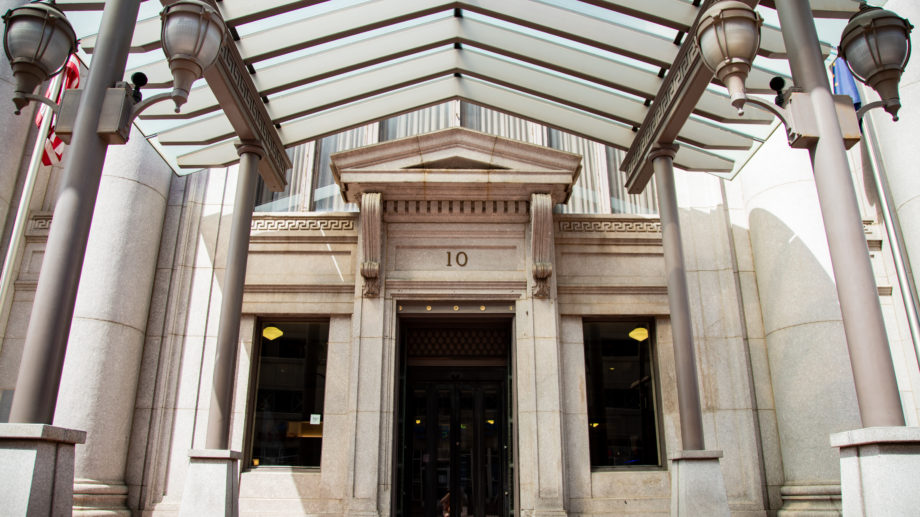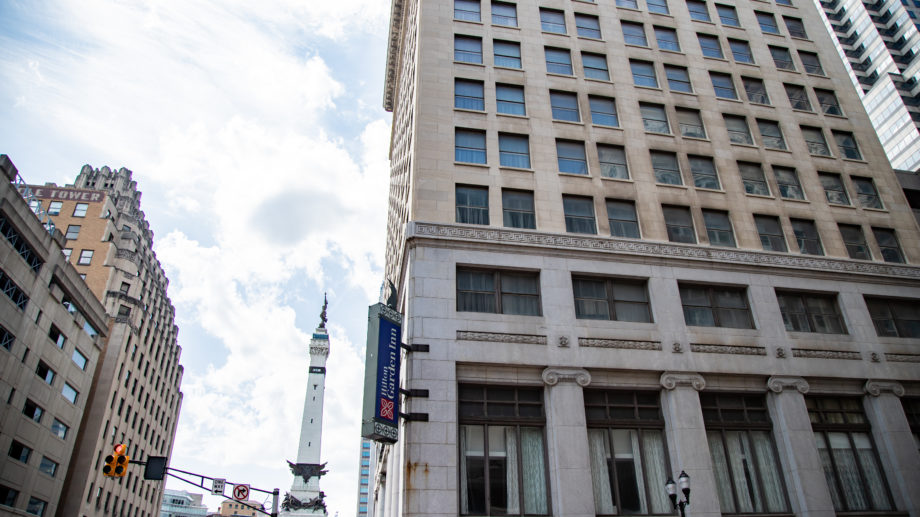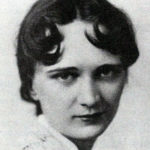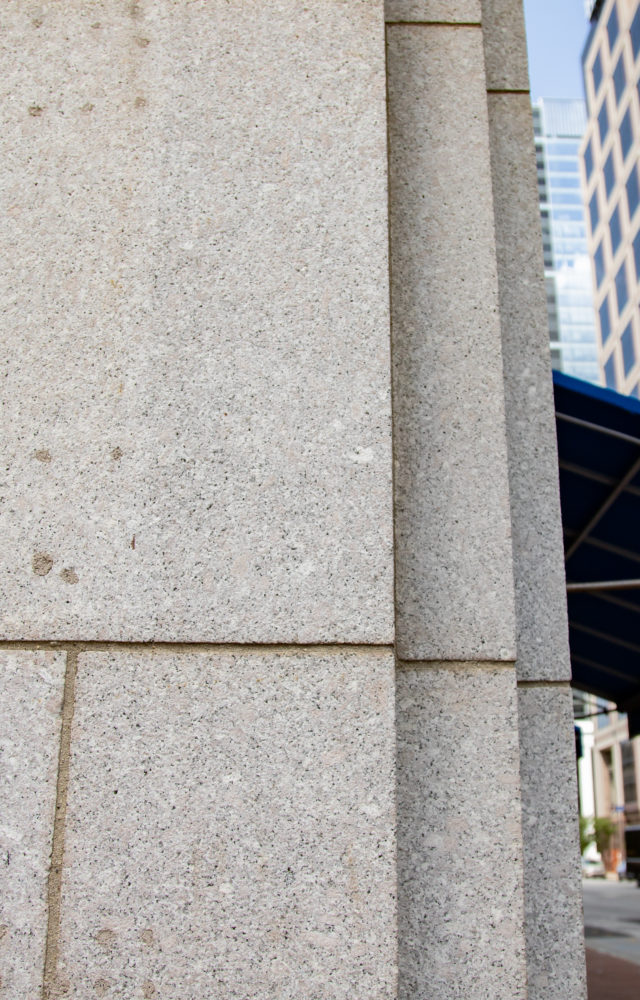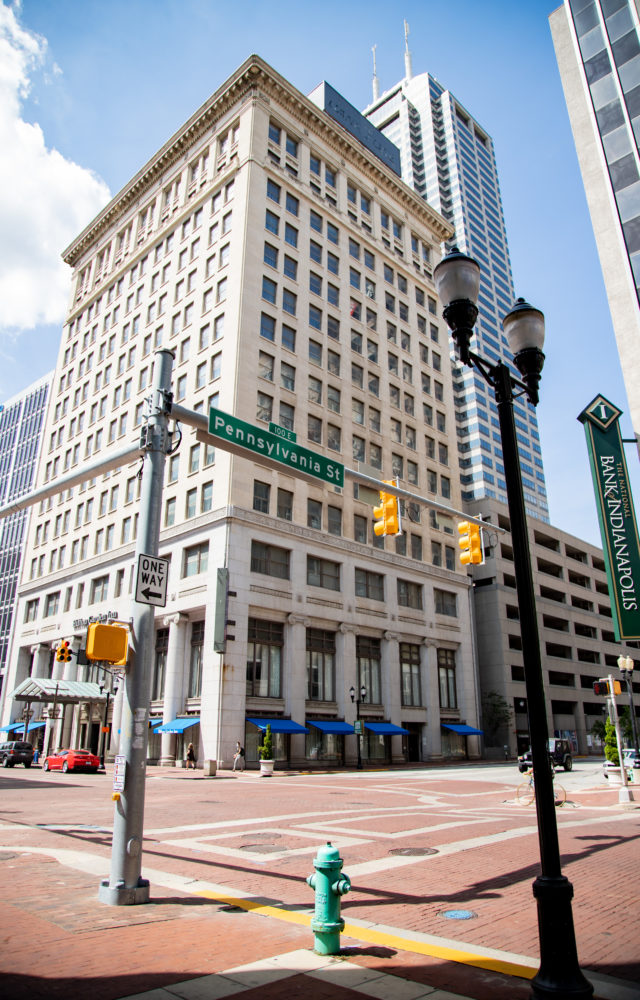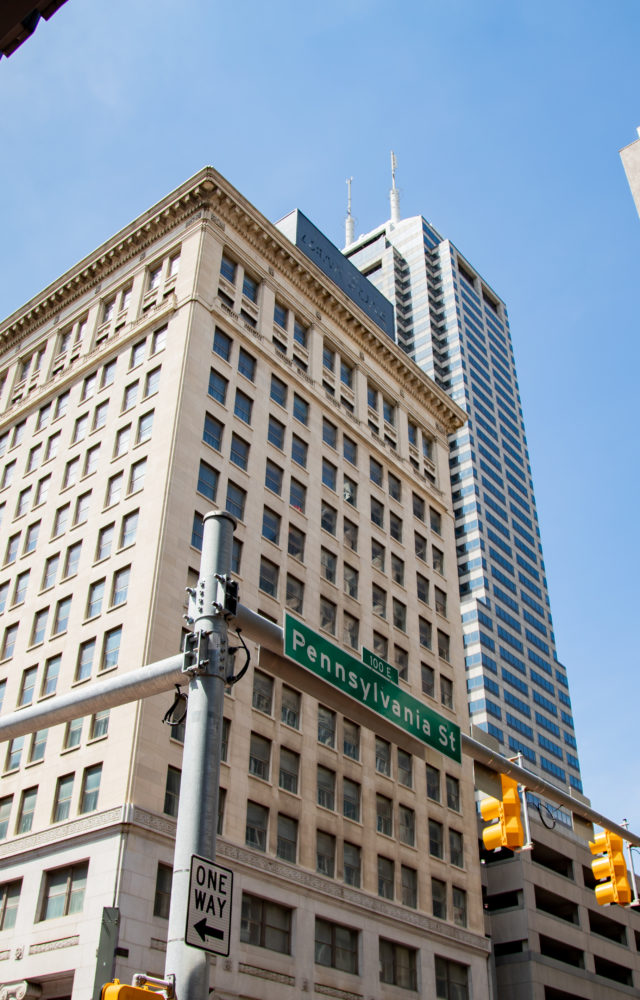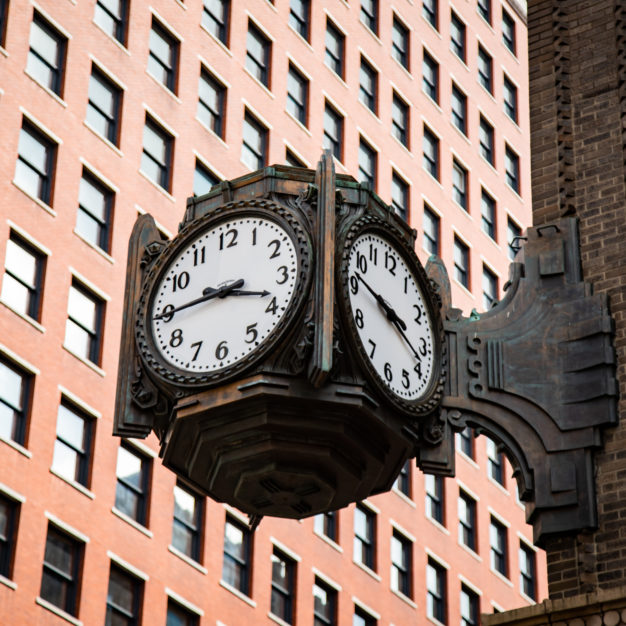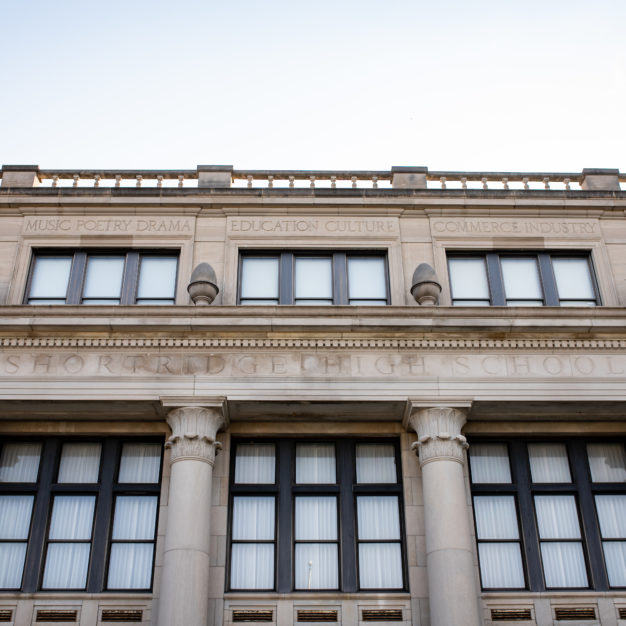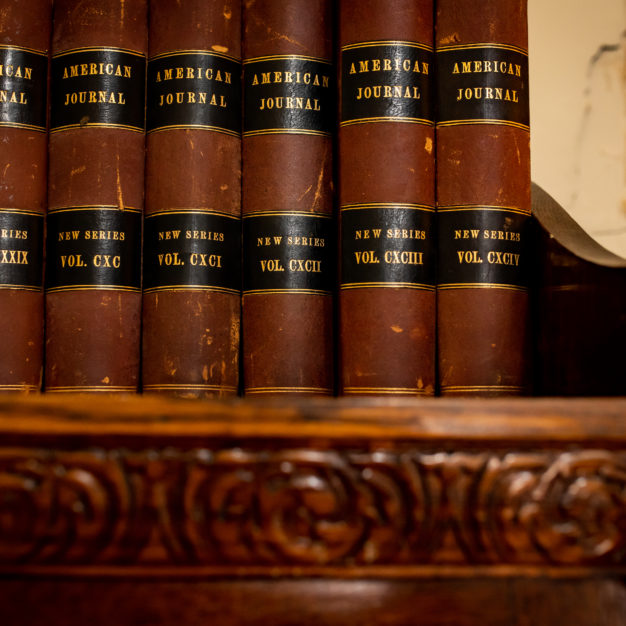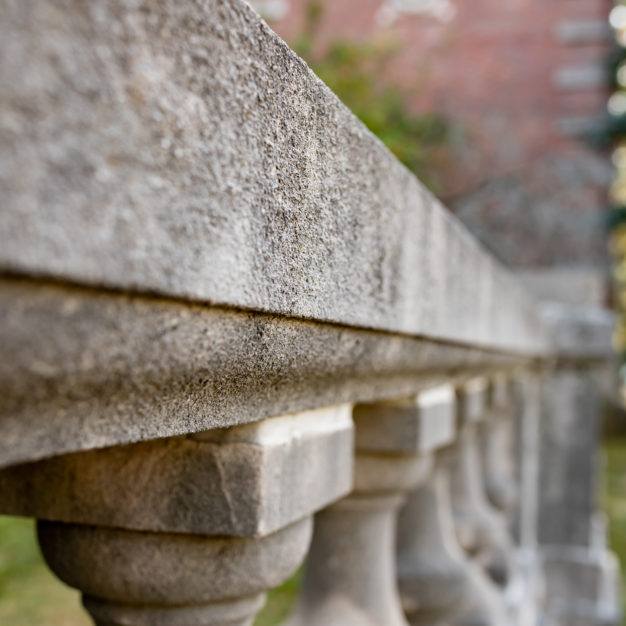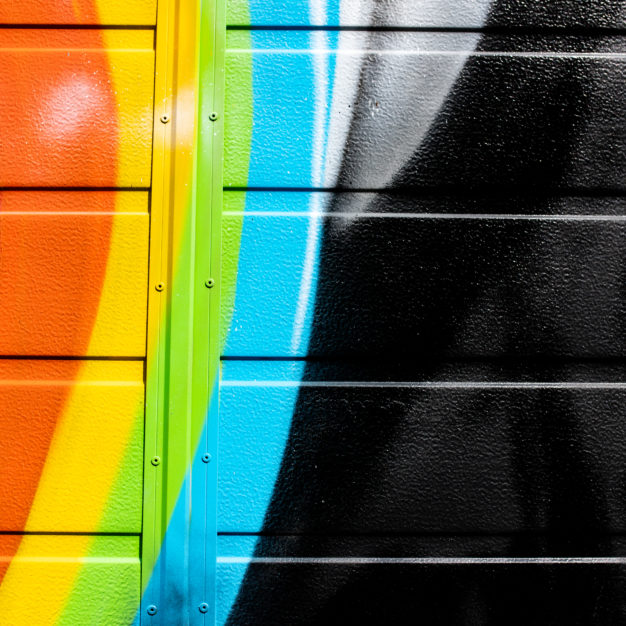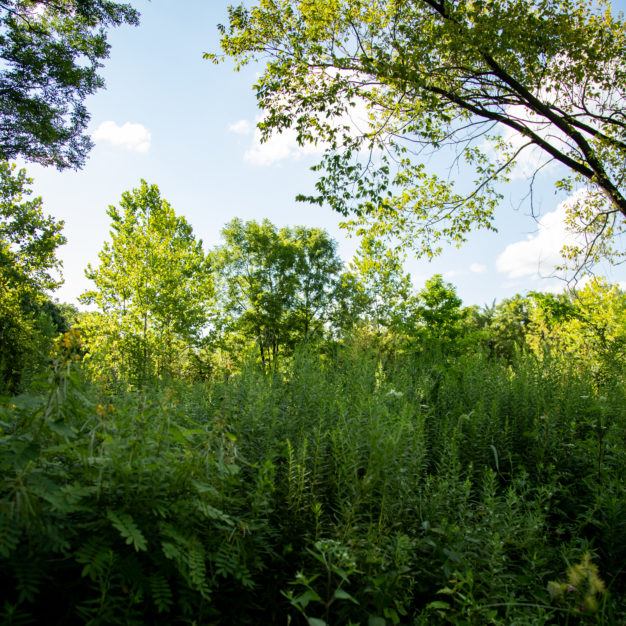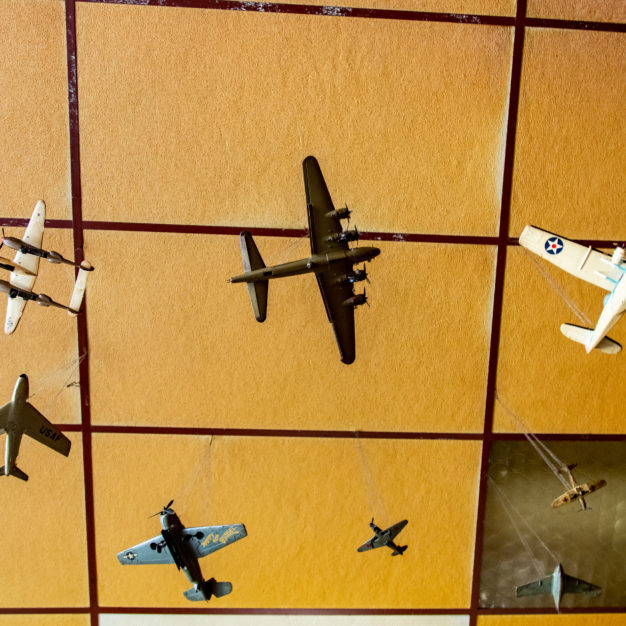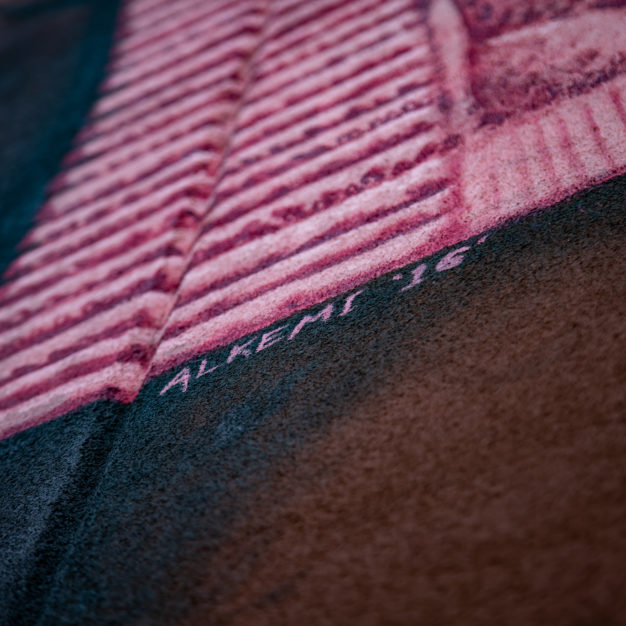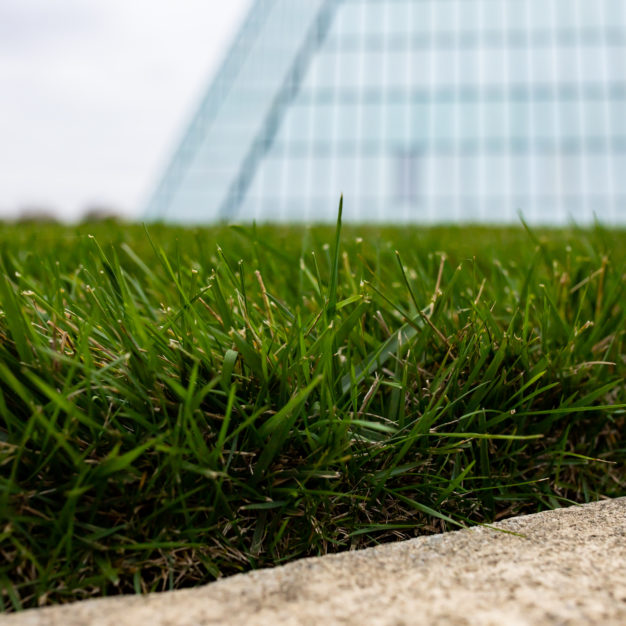Fletcher Trust Building39.768886, -86.156529
C. L. Moore penned many of her science fiction and fantasy stories while working as a stenographer and secretary at the Fletcher Trust Company in the 1930s.
Author
C. L. Moore
b. 1911 – d. 1987
Literary Inspiration
“The Black God’s Kiss”
Published 1934
NOTES
Dig
Deeper
Indianapolis is a place that inspires creativity. This is one of a dozen original pieces of visual and performing art created by Hoosier artists inspired by Bookmark Indy authors.
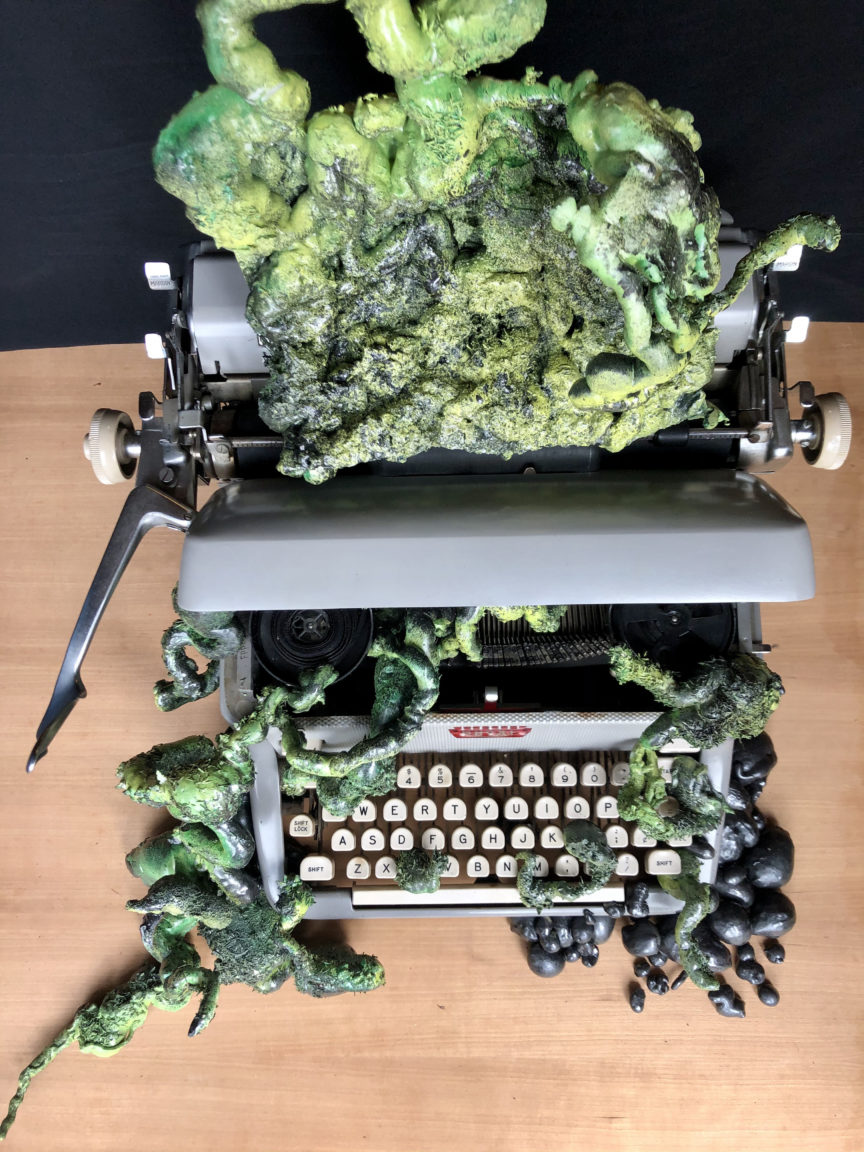

Abi Ogle
Royal Typewriter
Vintage typewriter, spray foam, mixed media
www.aogleart.com | Abi’s Instagram
Author C. L. Moore wrote and published her science fiction and fantasy stories while employed as a secretary at the Fletcher Trust Company in the 1930s. Artist Abi Ogle recognized and was inspired by the parallels between Moore’s own life and the dynamics at play in her work. Moore fabricated bizarre worlds and creaturely experiences for her readers that are alien but alluring, vivid but camouflaged, human—but not entirely; in brief, things are rarely what they seem. Ogle’s Royal Typewriter pays homage to the extraordinary, otherworldly and uncanny imagination of Moore, hidden in plain sight behind the secretary’s typewriter.
FLETCHER TRUST BUILDING
(Now Hilton Garden Inn Indianapolis Downtown)
10 East Market Street
Indianapolis, IN 46204
Closest IndyGo Stop
Carson Transit Center
How to Plan a Trip on IndyGo:
- Use the Trip Planner on IndyGo.net
- Use Google Maps (select “transit” as your travel method)
- Call IndyGo Customer Service at 317-635-3344
- Track your bus using the MyStop Mobile App
Pop-up sci-fi Poetry
May 15, 2021 | 4:00-7:00 p.m. | Monument Circle
Join us on Monument Circle to receive a complimentary poem inspired by C. L. Moore from poet Tony Brewer!
Partner: Tony Brewer

